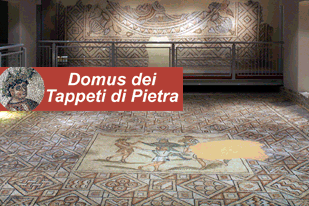Rocca Brancaleone





Rocca Brancaleone. Hotels near Rocca Brancaleone.
From:1) entrance via Rocca Brancaleone, 2)Rocca Brancaleone- entrance and parade ground, 3/4/5)Rocca Brancaleone one of the impressive towers
The Fortress was described by Desiderio Spreti, who was a Ravenna scholar and historian as being "excellently built, its foundations being surrounded by vast baked stone walls of magnificent height.
The construction was completed thirty years previously and the first troops arrived to guard it: 25 crossbow men, commanded by Marco di Riniero. The need to boost the defences of Ravenna being one of the primary preoccupations of the Venetians, after taking control of it in 1441.
The entire surrounding walls underwent restoration and consolidation, and new bastions were built such as Torre Zancana, on the will of the podestà Andrea Zancan on the western walls.
The town was then provided with a small castle of medieval foundations, that was located outside the San Mama gate and which was considered as being obsolete and inadequate for modern defensive tactics.
The order for the construction of a new fortress came from Venice in 1456, signed by the Doge Francesco Foscari. The Brancaleone stronghold, the name of which is still of uncertain origins, was built according to the most updated military criteria.
It consisted of a lobby, complete with four sturdy angular towers, and a Vast fortified township, that container the accommodations quarters of the garrisons, as well as the stables, the deposits of goods and arms, a water tank, the areas for the preparation of the cannon balls and gunpowder. There was a large trench all around, that continued inside the same.
Each tower had various shooting positions, suitable for housing the most modern of the firearms at that time which was the “bombarda”, the first cannon, that launched cannon ball with gunpowder, which provoked great fear. One such cannon ball was uncovered in 1973 which had remained hidden under the remains of a tower and which is now displayed at the National Museum.
The fortress was used for its original purpose on two occasions. In May 1509, when Venice had already been defeated in the Battle of Agnadello, it came under cannon fire by the Duke of Urbino, who was allied to Pope Julius II, who was thereby able to ratify the transfer of Ravenna to the Papal state.
Whilst in April 1512 it attempted to resist the siege by the French, who had set fire to the town and who were involved in fights against the Spanish and the Pope, their ally. As from the 17th century it was abandoned and much of the original stone work was removed and used for new buildings, which has considerably reduced its height.
It today houses a public park and an open-air arena.
Prof. Gianni Morelli
The pleasure of fine accommodation in the centre of Ravenna: we recommend the Fabbri hotels for a pleasant stay as follows:
The Centrale Byron Hotel, 3-star hotel in the centre of Ravenna, close to the main momuments;
The Bisanzio Hotel, 4-star hotel in the centre of Ravenna, close to the main momuments;
Once you have reached the hotel and parked your car, forget it and walk everywhere, because everything is within walking distance.
© reserved copyright





